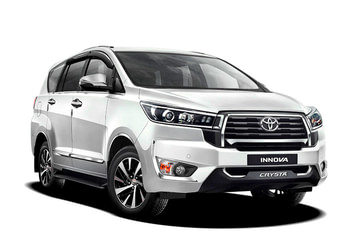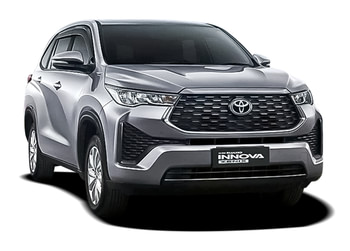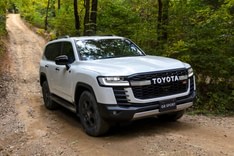Toyota Hyryder Hybrid long term review, 4,500km report
First report: The hybrid I’ve lived with and driven extensively is impressive and easy to recommend. Here’s why.
Published on Oct 25, 2024 05:45:00 PM
58,176 Views
Follow us on

It impressed me so much that I persuaded my wife to buy one.
It isn’t often that a new car impresses me as much as the Toyota Hyryder has. The hybrid’s EV-like initial responses, fuel efficiency that’s better than most frugal diesel cars and a likeable package backed by Toyota are some of the reasons why I persuaded my wife to buy the SUV as soon as it was launched.
But while I have one at home, it’s hard to pry it away from my wife. So, I grabbed the keys to the one Toyota lent us as a long-termer.
I think the Hyryder’s design is very appealing, and its ‘Speedy Blue’ paint makes it quite striking, too. On the inside, the dashboard and doors have a nice leatherette padding, and the brown and black colour scheme certainly lifts the cabin’s perceived quality. You can’t ignore that it shares many parts with lower-priced Marutis, but it isn’t to the extent of feeling cheap or offensive at its Rs 20 lakh price.
The Hyryder’s ergonomics are spot on, with plenty of seat, steering and central armrest adjustment for you to get comfortable. However, the seats aren’t the comfiest, and the cushioning results in some body ache on longer drives. At the rear, space is adequate for two adults – it isn’t as wide as the Creta’s – although six-footers will find headroom tight even with the backrest fully reclined.

After several road trips and airport runs, I can confidently say that with a plus-sized check-in bag in the boot, there’s only about enough room for a laptop bag; you can slide a laptop bag into the slim storage beneath the boot floor, too. On either side of the boot, there’s a deep storage area that is useful to stow smaller items.
I must talk about the touchscreen and wireless charger as well; the touchscreen’s software is buggy, resulting in frequent disconnection and low call volume when connected to wireless Android Auto and Apple CarPlay. We hope a software update solves this. The wireless charger is also flawed; it suspends charging often without reason, which is very annoying.

Also, the thin sun shade for the sunroof allows the cabin to be soaked in heat far too quickly when parked outdoors. A high-quality sunfilm on the sunroof could alleviate this issue.
Though Toyota has connected car tech, the vehicle locator is the only feature I found useful. It also tells you how much fuel is left and the current range, but I would have liked more information, especially related to fuel efficiency, and a trip log. You can’t unlock the vehicle via the app if you don’t use the app to lock it in the first place, which is quite strange. There is a pre-cooling feature, too, that I’ve used only once.
Rounding off the not-so-nice bits, when the engine/generator kicks in to charge the lithium-ion battery, the system occasionally makes quite a few sounds, which can take the uninitiated by surprise, and if you’re paying attention, you’ll also feel some vibrations at idle.

Now, let’s talk about the things I really love. The first is performance. A seamless and silent electric startup is something I truly appreciate. Next, the electric motor nicely complements the three-cylinder petrol engine, delivering almost electric vehicle-like responses, making it ideal for closing gaps or when overtaking. The torque curve tapers soon after, and the e-CVT makes the engine rev quite a bit when your foot is pinned to the throttle, emanating a rather unpleasant note.
But the highlight is its fuel efficiency. In Eco mode, the best I’ve achieved is 26.5kpl, with 80 percent highway driving and the rest in the city. With no effort to drive with the intent of maximising efficiency, the average city efficiency is about 20-21kpl in winter months, and this number drops to 18-19kpl in summer. An insider at Toyota explained that the e-compressor puts a high load on the hybrid system, which explains the lower efficiency when ambient temperatures are higher. Do note that these numbers are measured using the tankful-to-tankful method.

Lastly, the Hyryder’s suspension is on the firmer side, but driving manners and steering make it feel very confident at highway speeds. It also exudes an underlying toughness while dealing with poor, broken roads, which, to some extent, makes it similar to its rugged sibling, the Toyota Fortuner.
The Hyryder has been a fill-it, shut-it and forget-it car, one that goes about doing all that’s expected of it in a fuss-free and competent manner.
Also see:
Toyota Hyryder Festival Limited Edition launched
Kia Seltos vs Toyota Hyryder vs MG ZS EV comparison video
Toyota Rumion gets free accessories with new Festival Limited Edition
| Fact File | Petrol AT |
|---|---|
| Distance covered | 4,513km |
| Price when new | Rs 19.99 lakh |
| Test economy | 19kpl |
| Maintenance costs | Nil |
| Faults | None |
| Previous Report | None |
Copyright (c) Autocar India. All rights reserved.



















Comments
Member Login
Personal Details
mahesh sharma - 182 days ago
Petrol mild hybrid urban cruiser is giving me a measly 11.5 kms to a litter in city!
Vichal Singh - 183 days ago
Try Honda City eHev